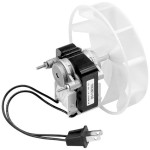How to Repair Bathroom Tile
Bathroom tiles are a common and popular choice for flooring and wall coverings due to their durability, water resistance, and aesthetic appeal. However, even the most durable tiles can crack, chip, or break over time due to wear and tear, accidents, or improper installation. When this happens, it is important to repair the damaged tiles promptly to prevent further damage and maintain the overall integrity of the bathroom.
Repairing bathroom tiles can be a relatively simple and straightforward process, but it does require some basic tools and materials, as well as careful attention to detail. Here is a step-by-step guide on how to repair bathroom tile:
1. Gather Necessary Tools and Materials
Before you begin, gather the following tools and materials:
- Safety glasses
- Work gloves
- Hammer or chisel
- Tile saw or nippers
- Grout removal tool
- New tile(s)
- Thin-set mortar
- Grout
- Grout float
- Sponge
- Bucket
2. Remove Damaged Tile(s)
Wear safety glasses and work gloves for protection. Use a hammer or chisel to carefully break the damaged tile(s) into smaller pieces. Be careful not to damage the surrounding tiles.
3. Clean the Area
Once the damaged tile(s) are removed, use a grout removal tool to scrape away any remaining grout from the surrounding area. Clean the area thoroughly with a damp sponge.
4. Measure and Cut New Tile(s)
Measure the space where the new tile(s) will go and cut them to size using a tile saw or nippers. Make sure the new tile(s) fit snugly into the space.
5. Apply Thin-Set Mortar
Spread a thin layer of thin-set mortar on the back of the new tile(s). Use a notched trowel to ensure even coverage.
6. Set the New Tile(s)
Carefully set the new tile(s) into place, pressing down firmly to ensure good contact with the thin-set mortar. Make sure the tiles are level with the surrounding tiles.
7. Grout the Joints
Once the thin-set mortar has set, mix the grout according to the manufacturer's instructions. Apply the grout to the joints between the tiles using a grout float. Press the grout firmly into the joints.
8. Clean the Tiles
Use a damp sponge to clean the tiles and remove any excess grout. Rinse the sponge frequently to prevent grout residue from building up.
9. Seal the Grout
Once the grout has dried, apply a grout sealer to help protect it from moisture and stains. Follow the manufacturer's instructions for application.
Tips for Successful Bathroom Tile Repair
- Use the same type of tile as the original tile, if possible.
- Make sure the new tile(s) are level with the surrounding tiles.
- Press the grout firmly into the joints to create a strong bond.
- Clean the tiles thoroughly after grouting to remove any excess grout.
- Seal the grout to protect it from moisture and stains.
By following these steps carefully, you can repair bathroom tiles and restore the aesthetic appeal and functionality of your bathroom.

Collins Diy Survival Demos How To Fix A Broken Tile

How To Repair Tile Falls Off Shower Wall Ceramic D I Y

How To Prevent Expensive Bathroom Shower Tile And Grout Repair Promaster Home Handyman

Why Ed Tiles In Your Bathroom Are A Problem Shower Sealed

Home Improvement Bathroom Wall Tile Repair

How To Fix Ed Tile From Hairline Fractures Major Fissures

How To Remove Replace One Bathroom Tile Ceramic Repair

Is Ed Grout A Problem Repair Easy The Medic

Water Damage Behind Shower Tiles

How To Replace Bathroom Tiles That Have Fallen Off







